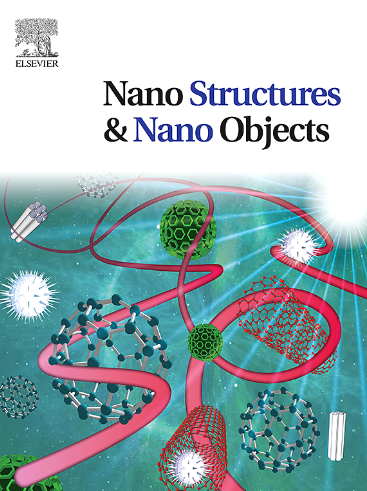缓冲气体压力对爆炸丝制备的氧化纳米颗粒物相及尺寸的影响
IF 5.45
Q1 Physics and Astronomy
引用次数: 0
摘要
研究了Ar + 20 % mol. O2缓冲气和氧分压对爆炸丝法制备的钨、钼、铁和铜纳米氧化物的相组成和平均粒径的影响。当缓冲气体(BG)压力从0.1增加到0.3 MPa时,所有氧化物粉末的平均粒径都增加了,而当缓冲气体压力从0.3增加到0.4 MPa时,平均粒径基本保持不变。缓冲气体压力的增加为合成的纳米颗粒提供了更好的冷却条件,纳米颗粒中含有更多的高温Fe2O3、WO3和MoO3氧化物。将氧分压从0.02提高到0.08 MPa并没有导致纳米颗粒完全氧化,因为同时增加了平均颗粒尺寸和冷却速度。实验表明,制备氧化铜和氧化铁所需的最小BG压力为0.2 MPa,而制备氧化钨和氧化钼所需的最小BG压力为0.4 MPa。这些工作关系的建立对于开发多组分(高熵)氧化物多线电子束合成纳米粒子和涂层的新工艺具有重要意义本文章由计算机程序翻译,如有差异,请以英文原文为准。
Effect of buffer gas pressure on phases and size of oxide nanoparticles produced by exploding wires
The effects of Ar + 20 % mol. O2 buffer gas and partial oxygen pressures on phase composition and mean sizes of nanosized particles of tungsten, molybdenum, iron and copper oxides obtained using exploding wires (EW) have been investigated. The buffer gas (BG) pressure increase from 0.1 to 0.3 MPa allowed increasing the mean particle size of all oxide powders while it was kept almost constant in further increasing the pressure from 0.3 to 0.4 MPa. The increase in the buffer gas pressure provided better cooling conditions for the synthesized nanosized particles, which also contained more of high-temperature Fe2O3, WO3, and MoO3 oxides. Increasing the partial pressure of oxygen from 0.02 to 0.08 MPa did not resulted in complete oxidizing of the nanoparticles because of simultaneous increasing the mean particles size and their cooling rate. The experiments showed that the minimal BG pressure required for obtaining copper and iron oxides was 0.2 MPa, whereas for tungsten and molybdenum oxides it was 0.4 MPa. The established in these work dependencies could be of fundamental meaning for developing novel process of multi-wire EW synthesis of nanoparticles and coatings from multicomponent (high-entropy) oxides
求助全文
通过发布文献求助,成功后即可免费获取论文全文。
去求助
来源期刊

Nano-Structures & Nano-Objects
Physics and Astronomy-Condensed Matter Physics
CiteScore
9.20
自引率
0.00%
发文量
60
审稿时长
22 days
期刊介绍:
Nano-Structures & Nano-Objects is a new journal devoted to all aspects of the synthesis and the properties of this new flourishing domain. The journal is devoted to novel architectures at the nano-level with an emphasis on new synthesis and characterization methods. The journal is focused on the objects rather than on their applications. However, the research for new applications of original nano-structures & nano-objects in various fields such as nano-electronics, energy conversion, catalysis, drug delivery and nano-medicine is also welcome. The scope of Nano-Structures & Nano-Objects involves: -Metal and alloy nanoparticles with complex nanostructures such as shape control, core-shell and dumbells -Oxide nanoparticles and nanostructures, with complex oxide/metal, oxide/surface and oxide /organic interfaces -Inorganic semi-conducting nanoparticles (quantum dots) with an emphasis on new phases, structures, shapes and complexity -Nanostructures involving molecular inorganic species such as nanoparticles of coordination compounds, molecular magnets, spin transition nanoparticles etc. or organic nano-objects, in particular for molecular electronics -Nanostructured materials such as nano-MOFs and nano-zeolites -Hetero-junctions between molecules and nano-objects, between different nano-objects & nanostructures or between nano-objects & nanostructures and surfaces -Methods of characterization specific of the nano size or adapted for the nano size such as X-ray and neutron scattering, light scattering, NMR, Raman, Plasmonics, near field microscopies, various TEM and SEM techniques, magnetic studies, etc .
 求助内容:
求助内容: 应助结果提醒方式:
应助结果提醒方式:


